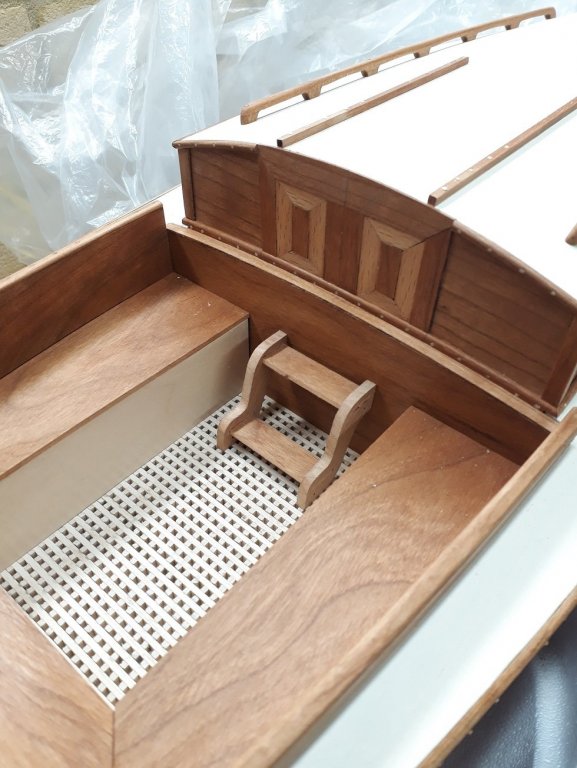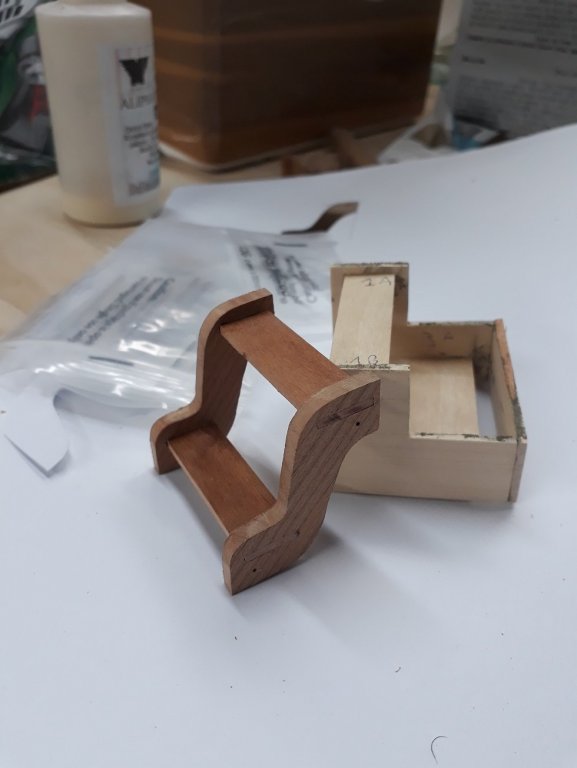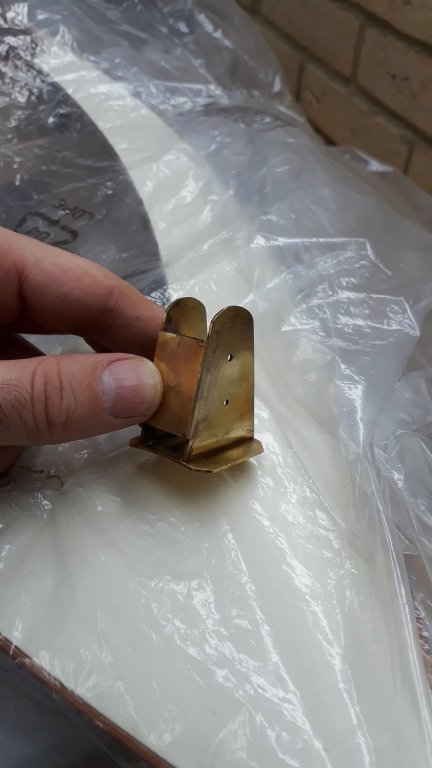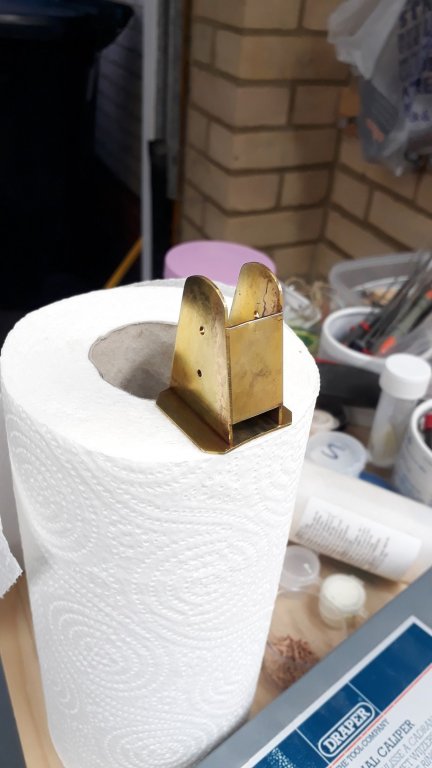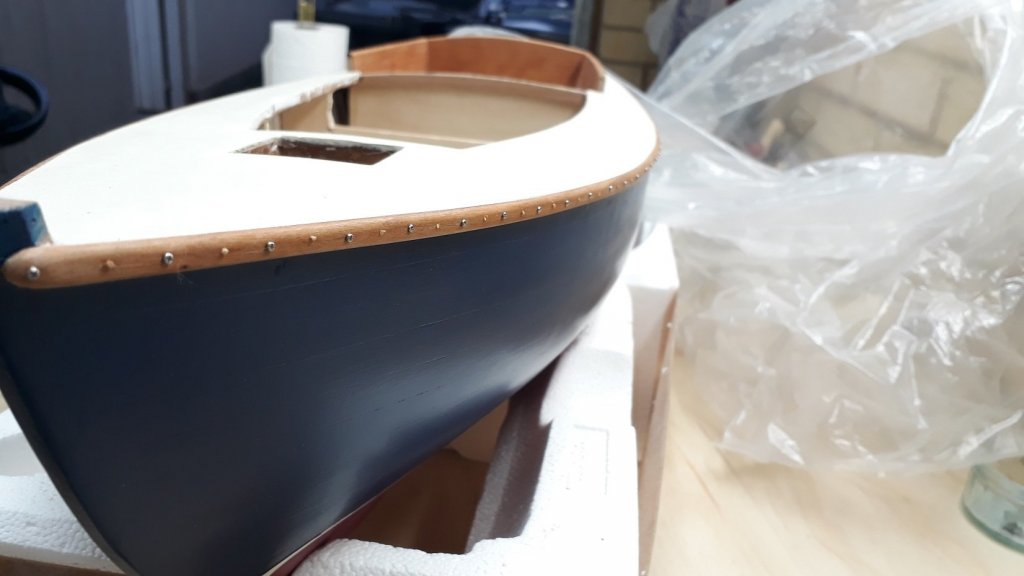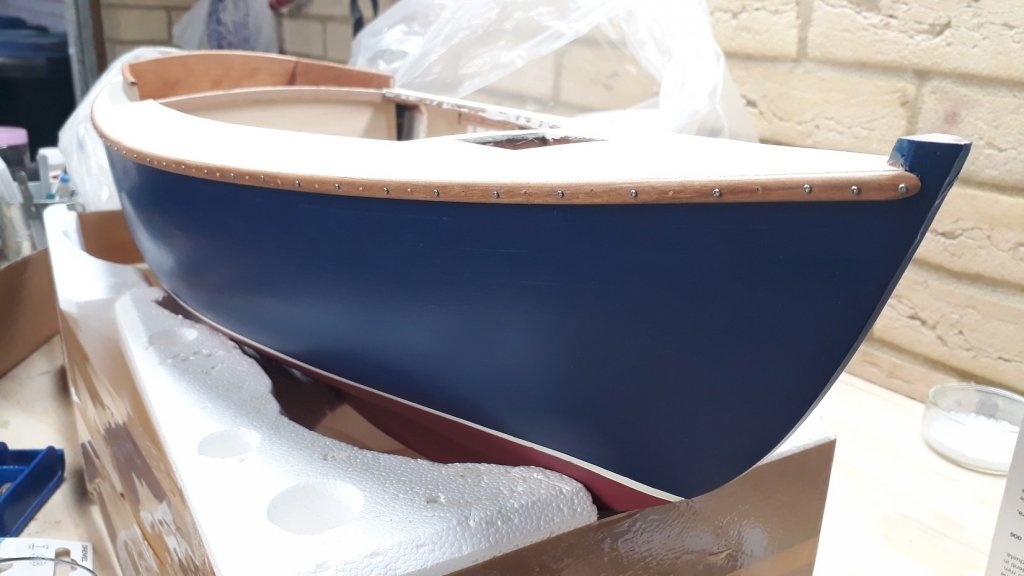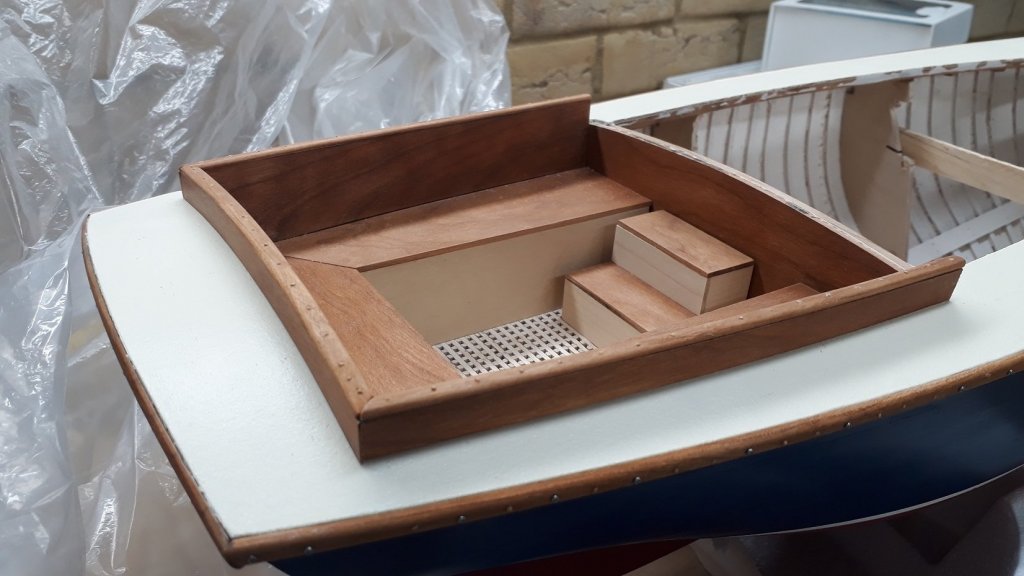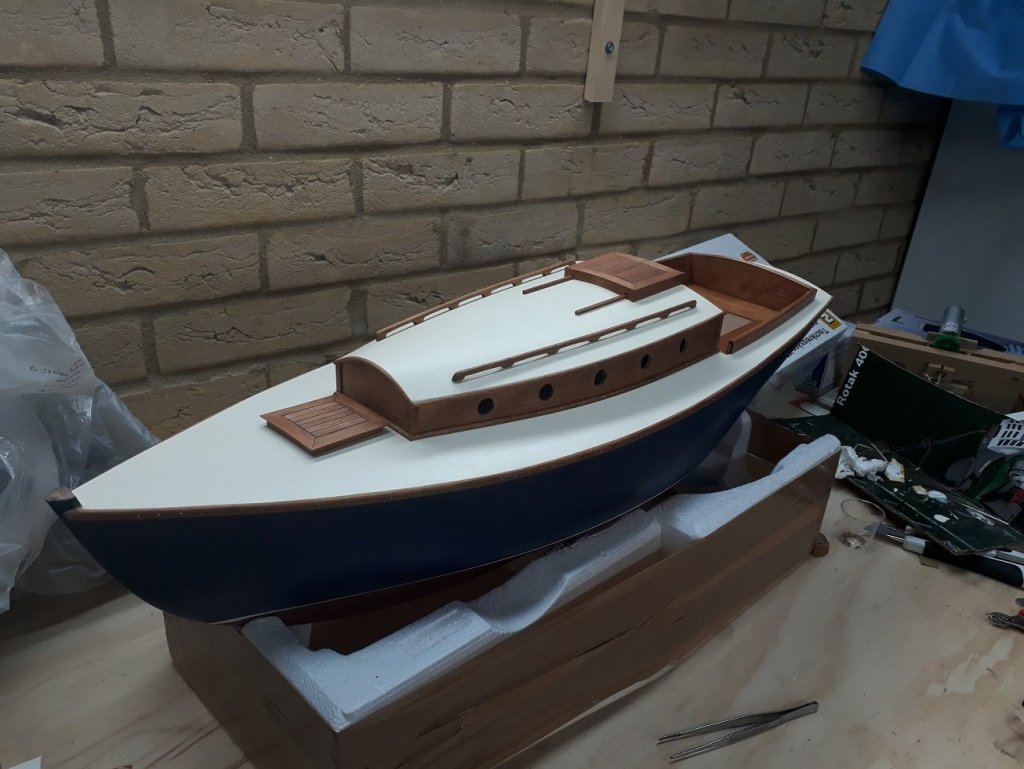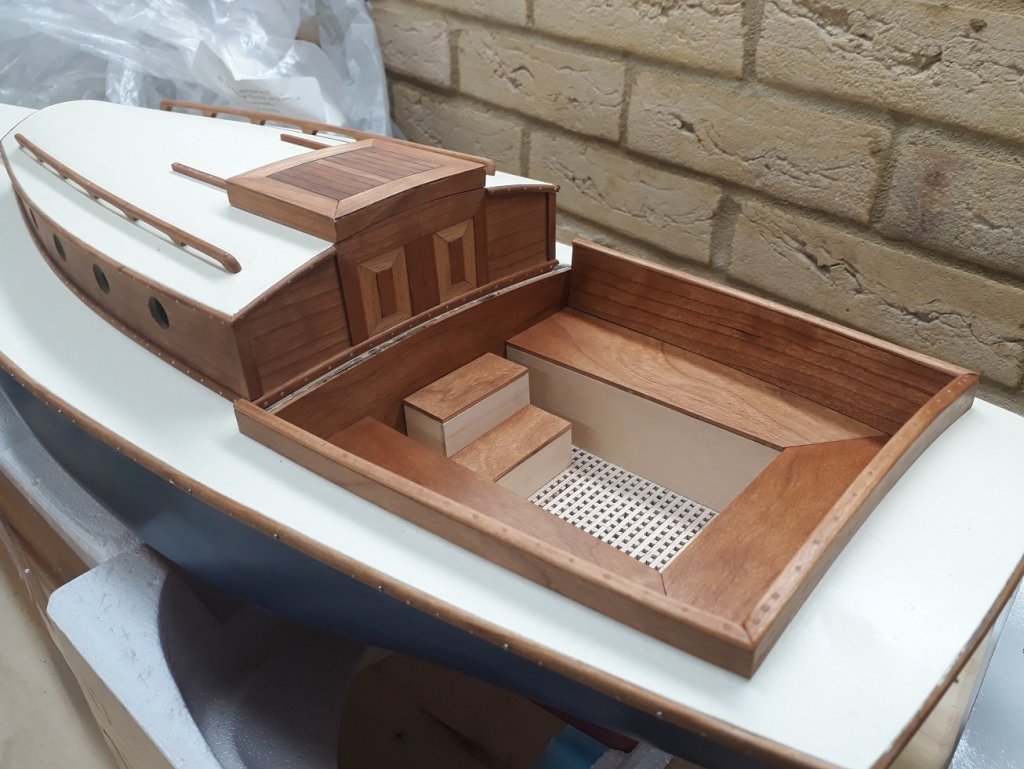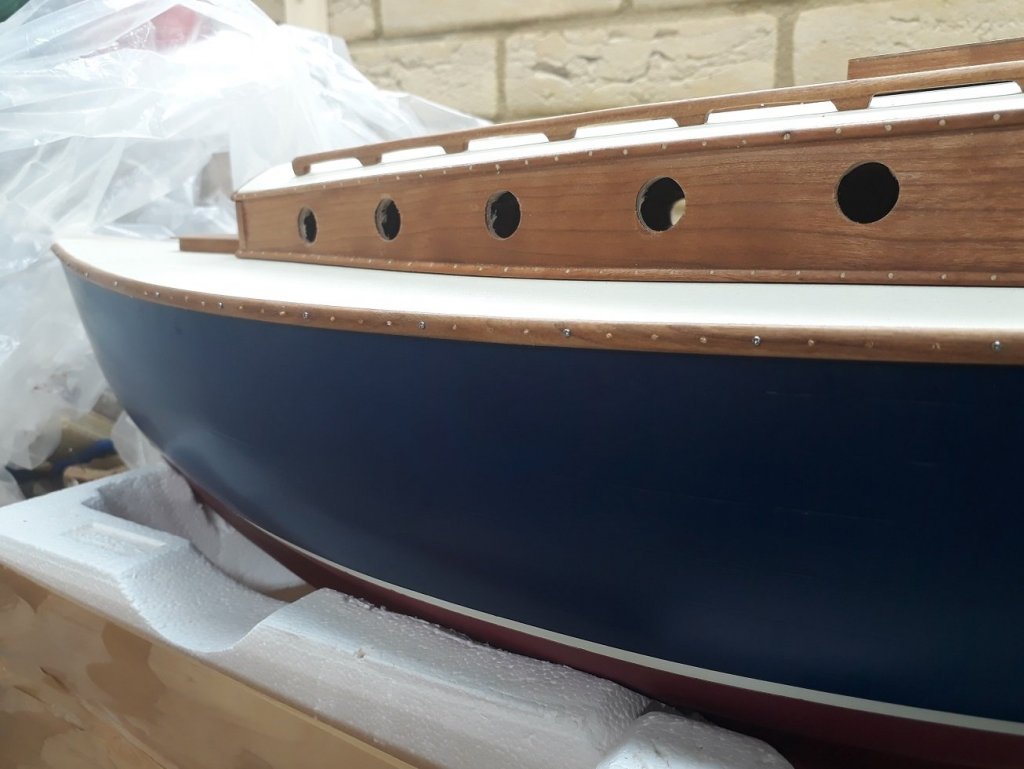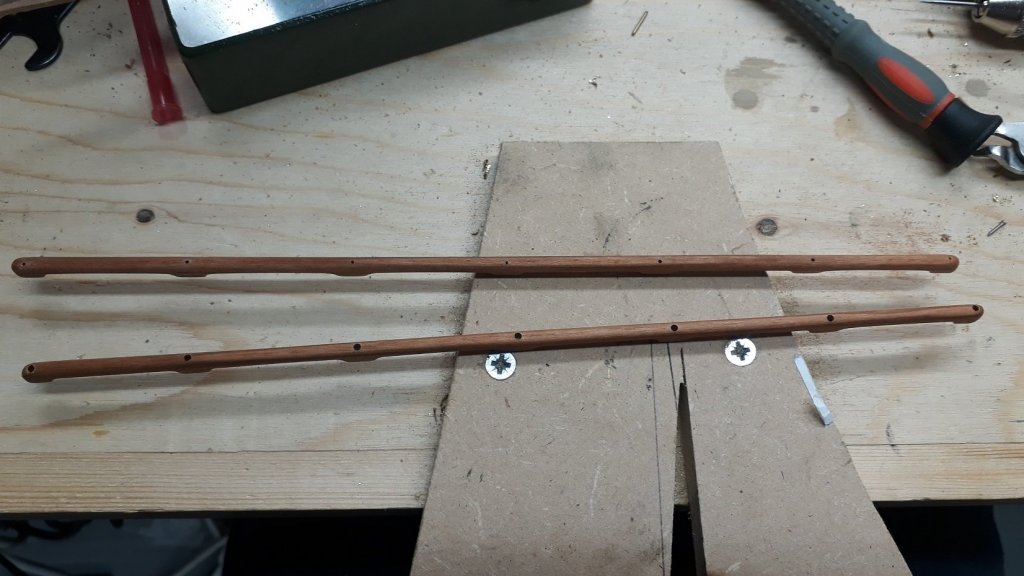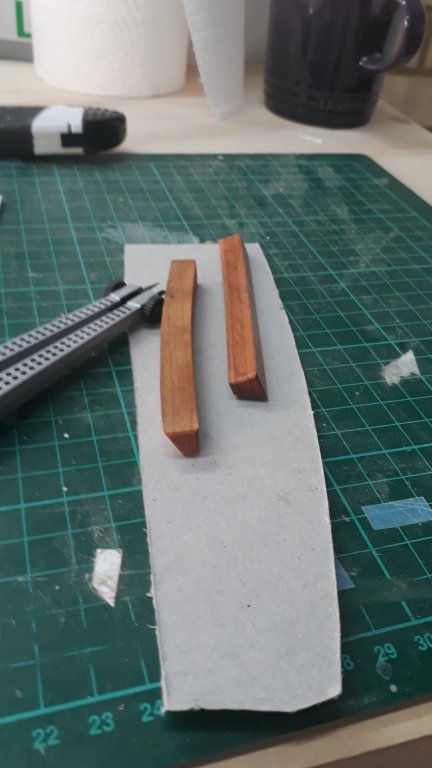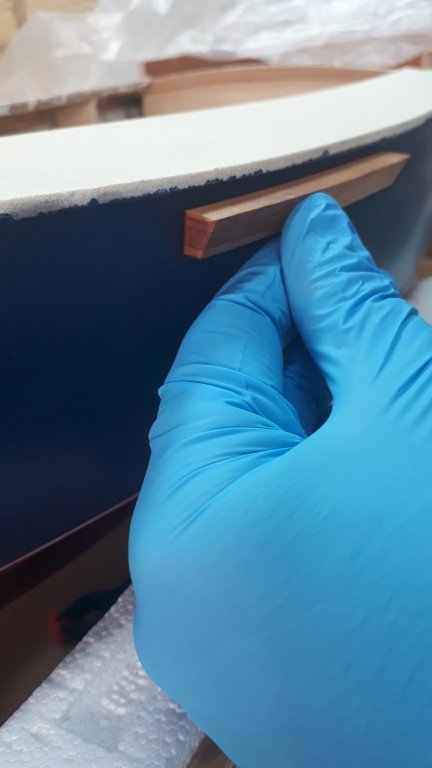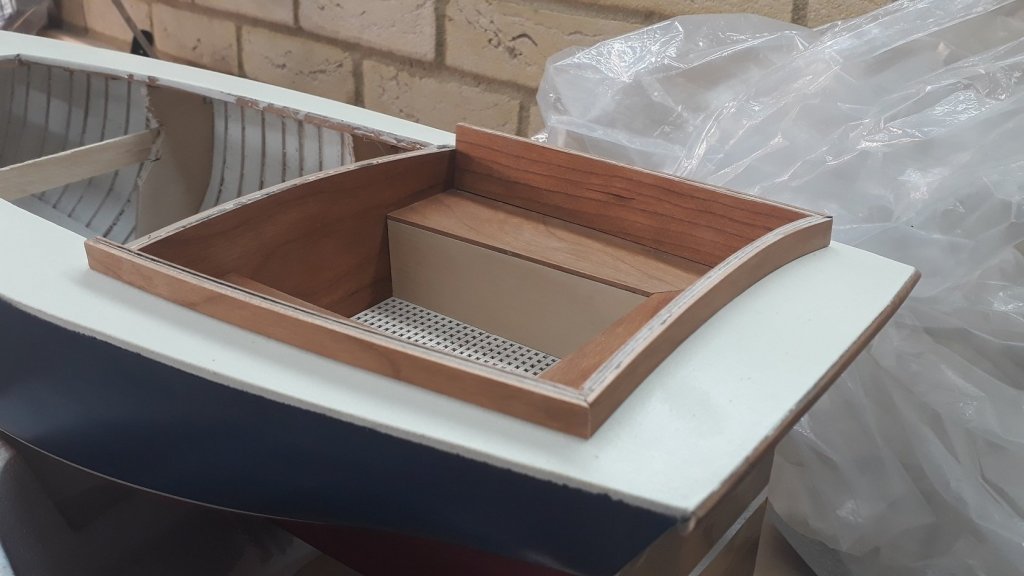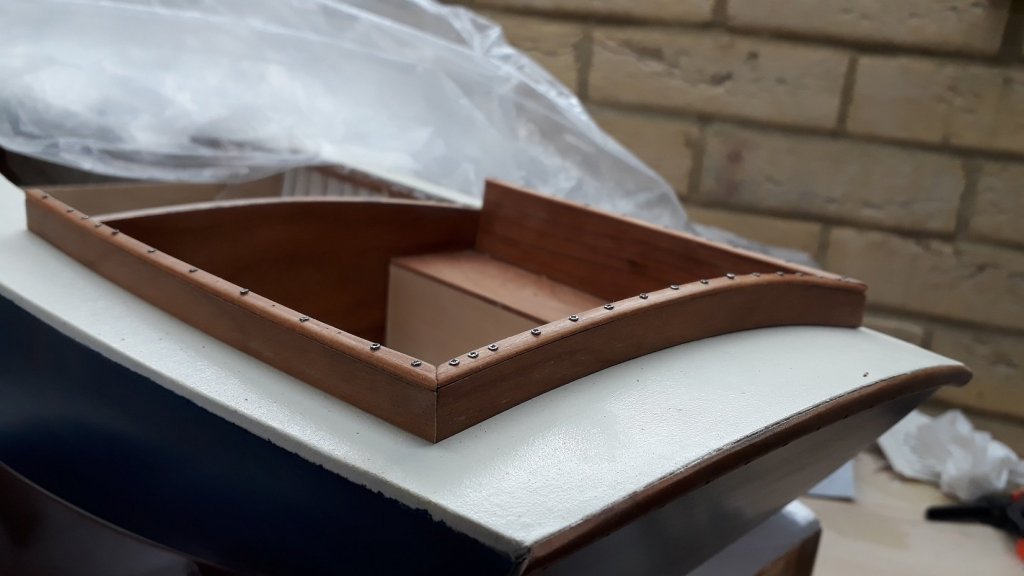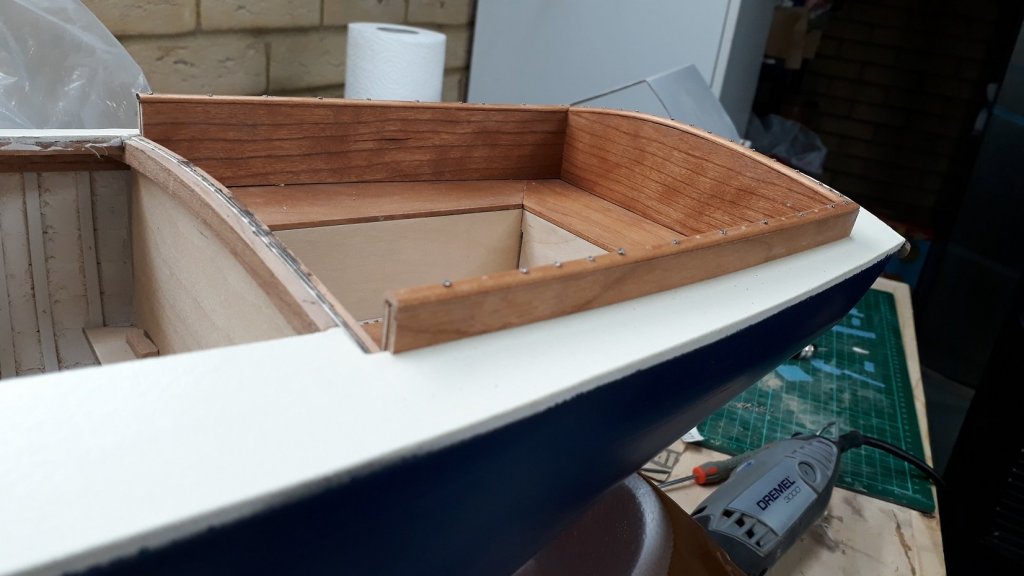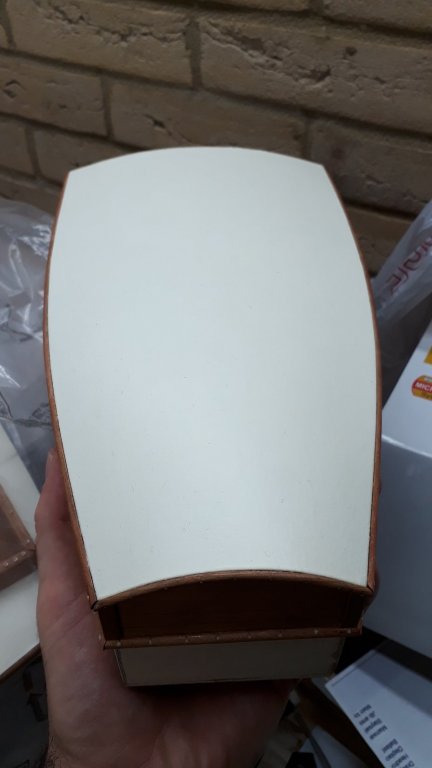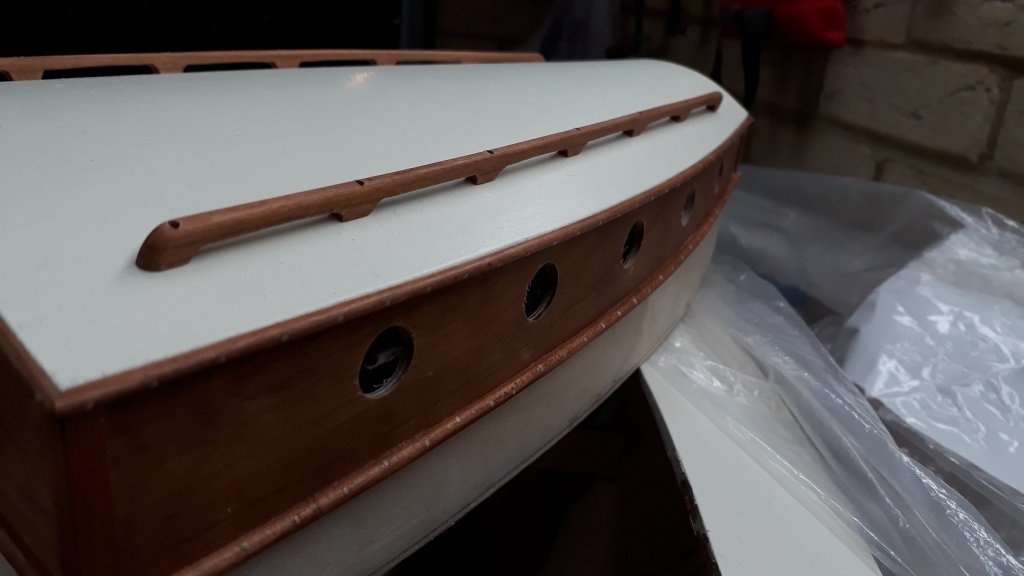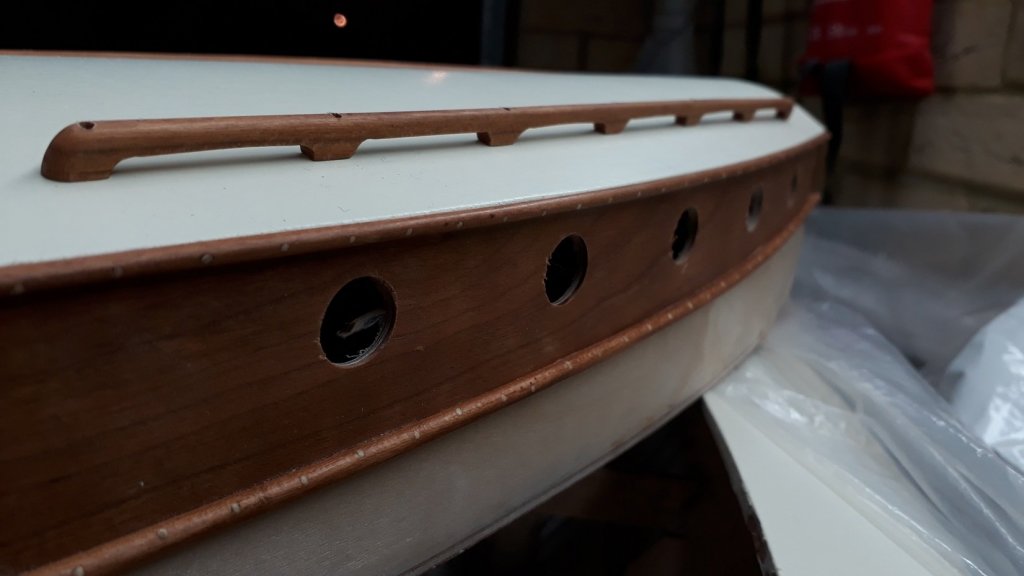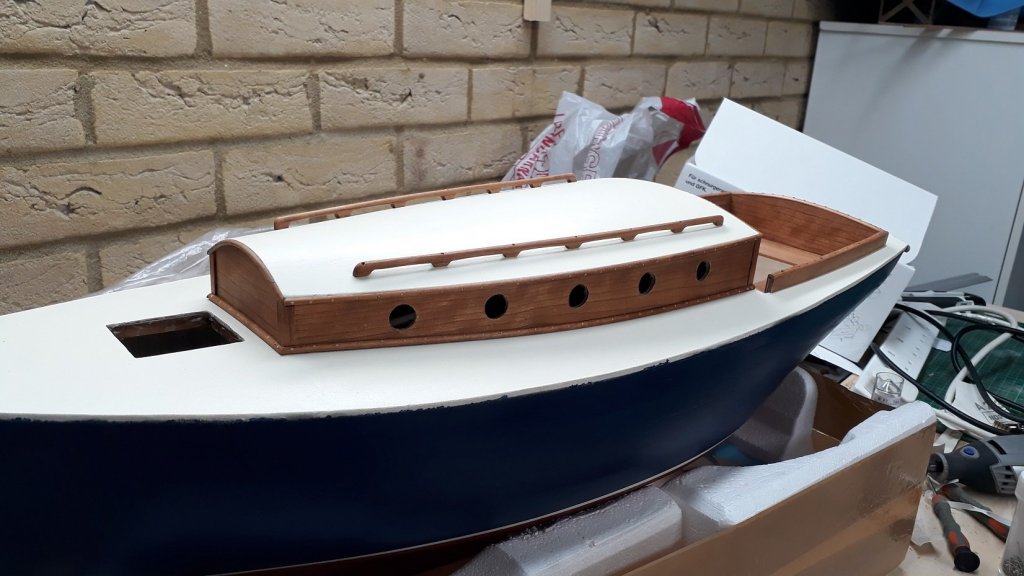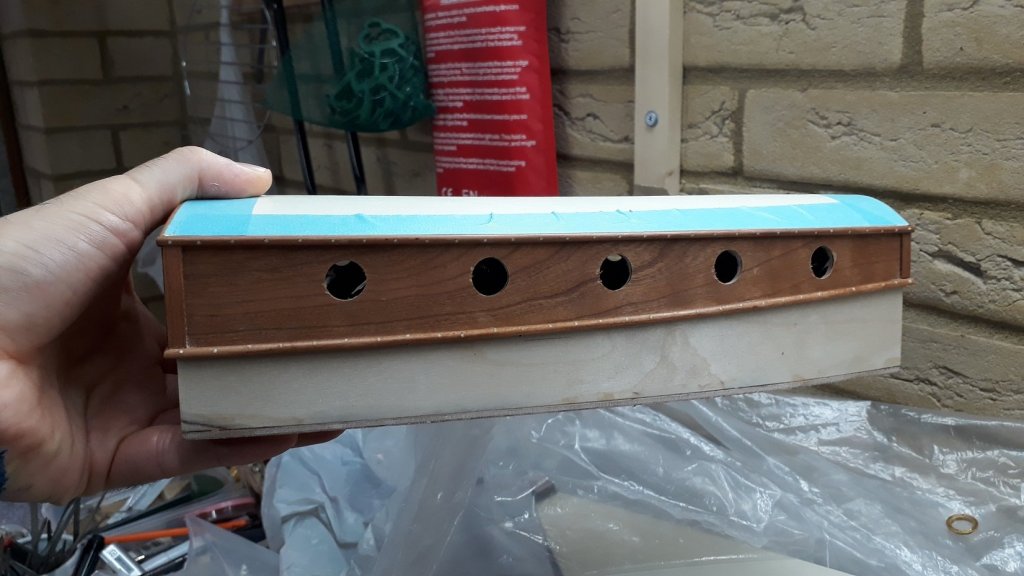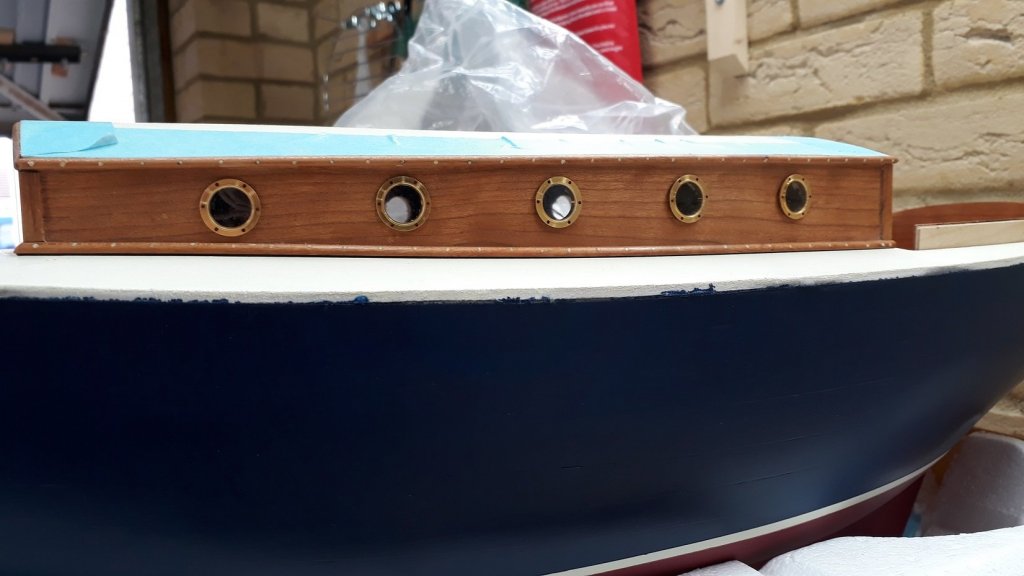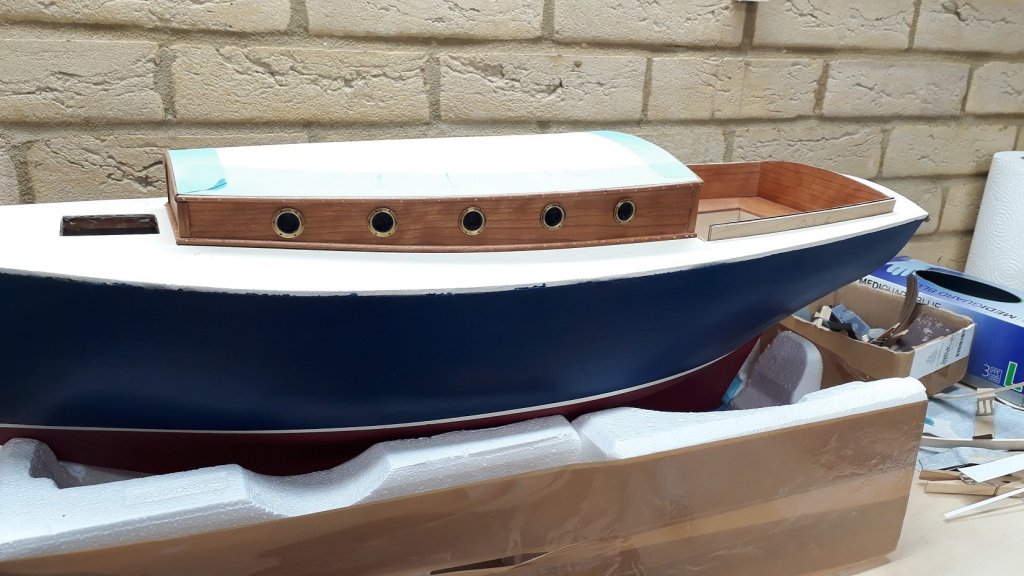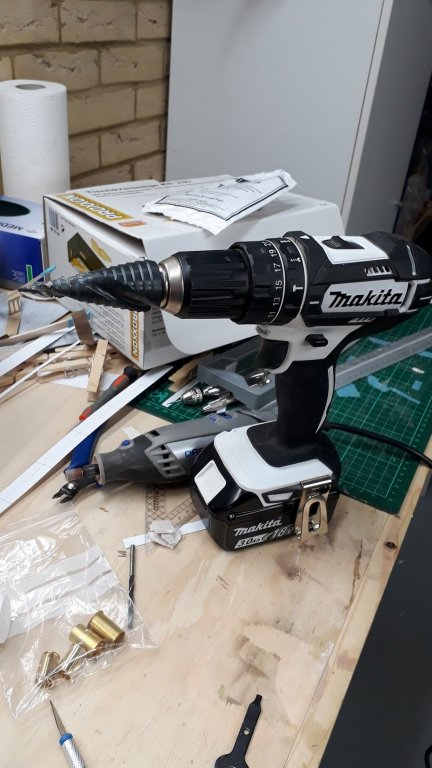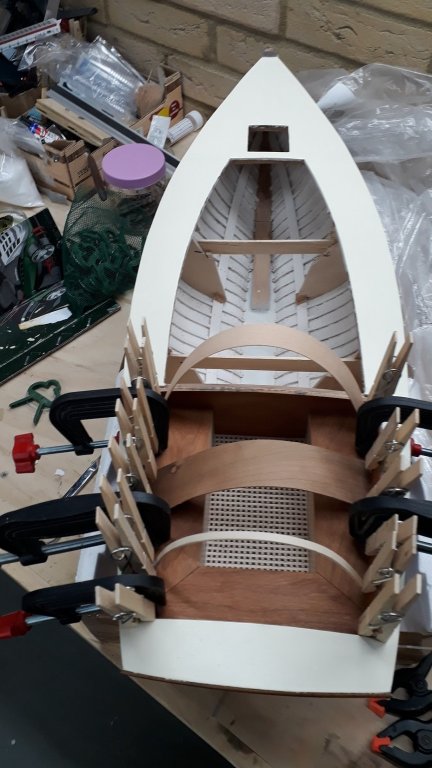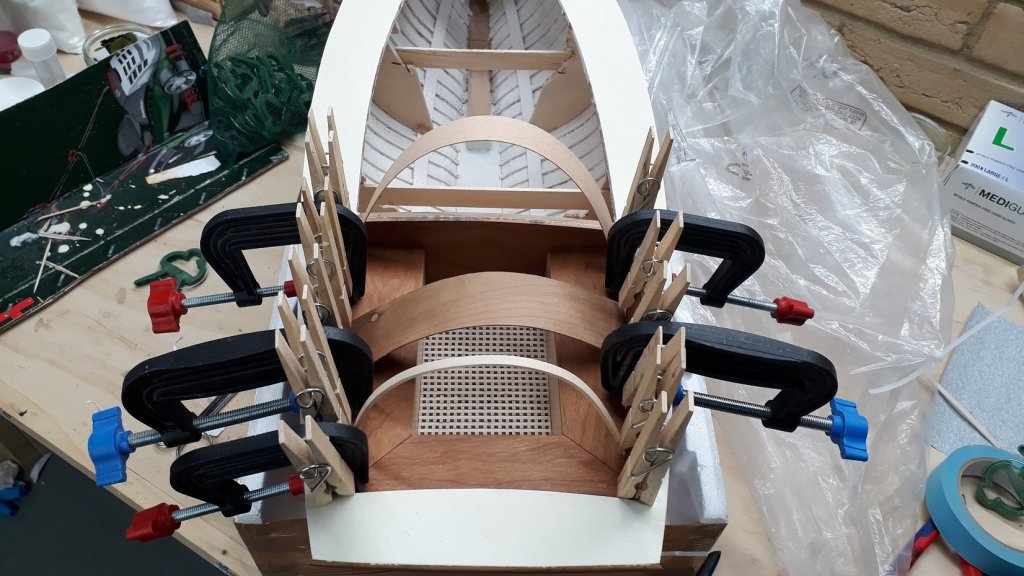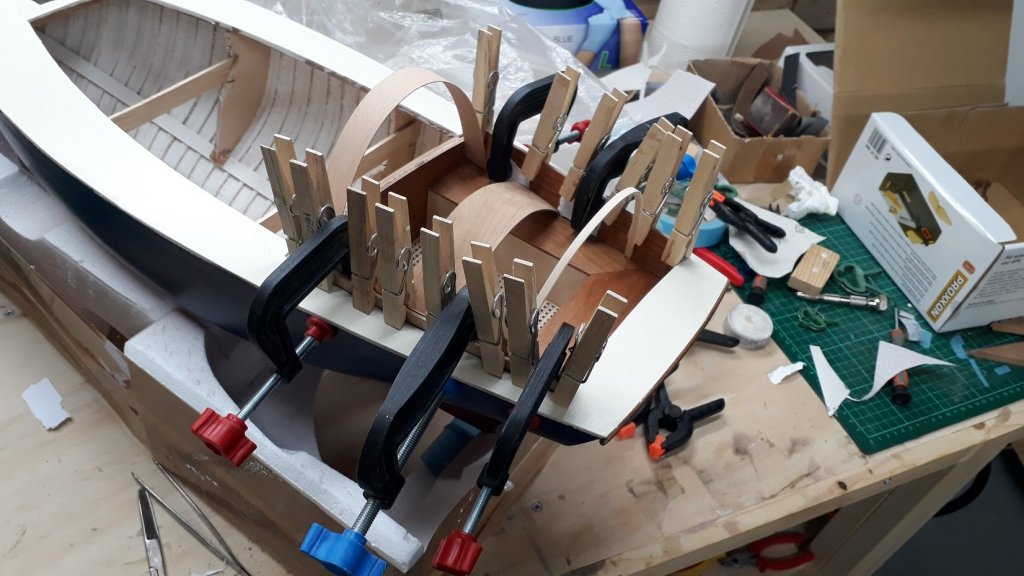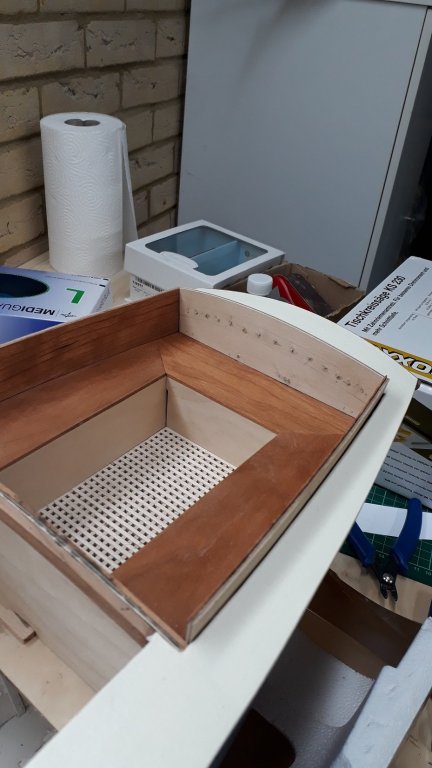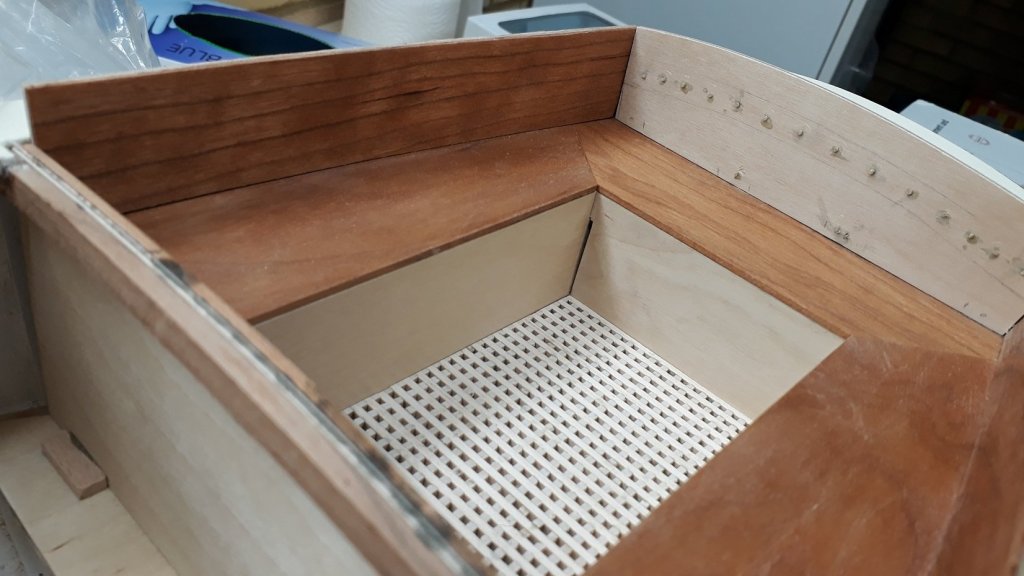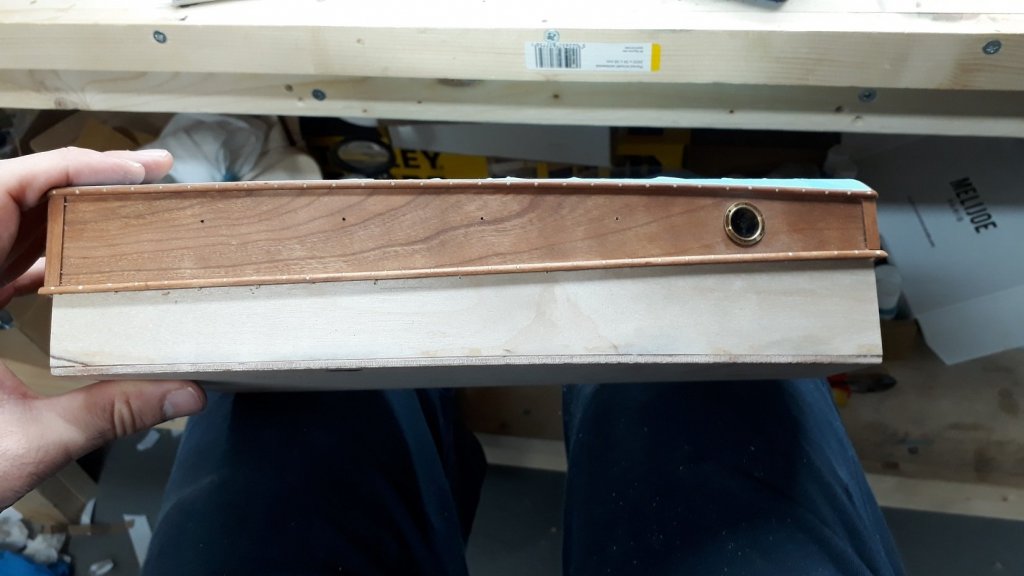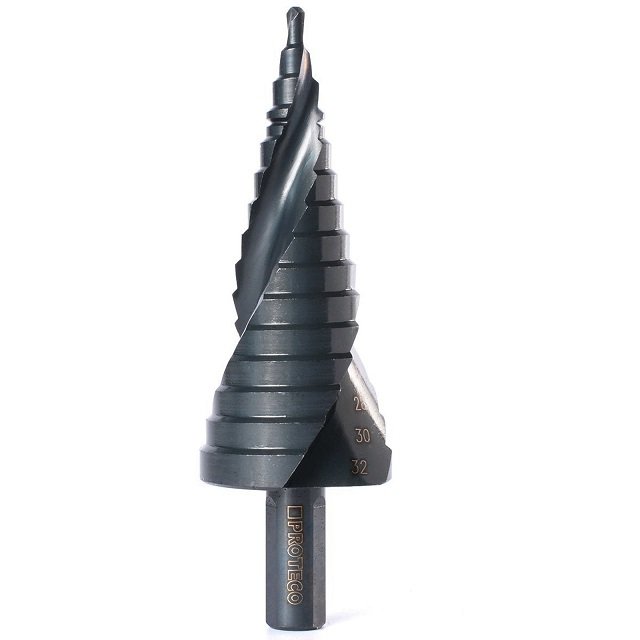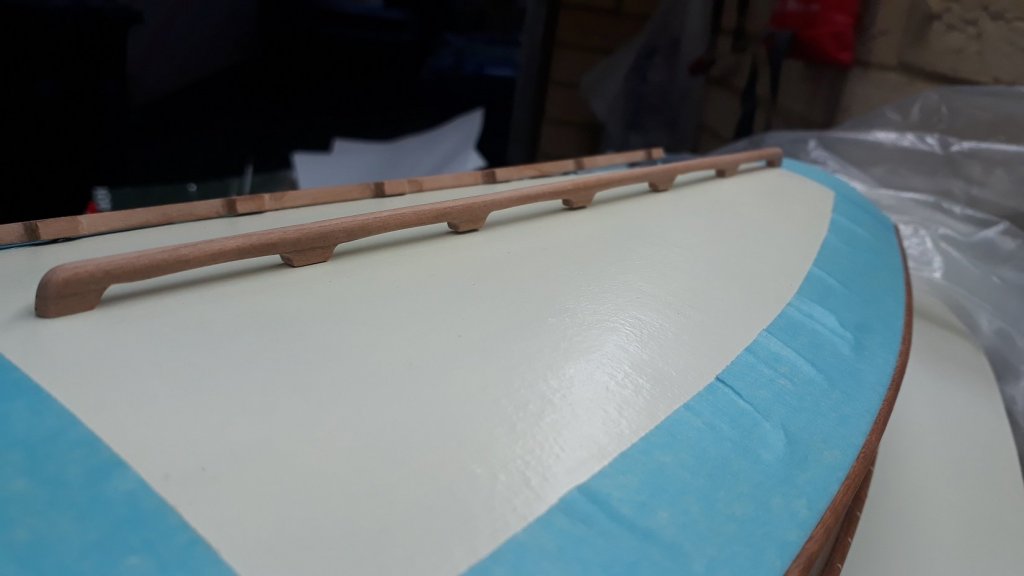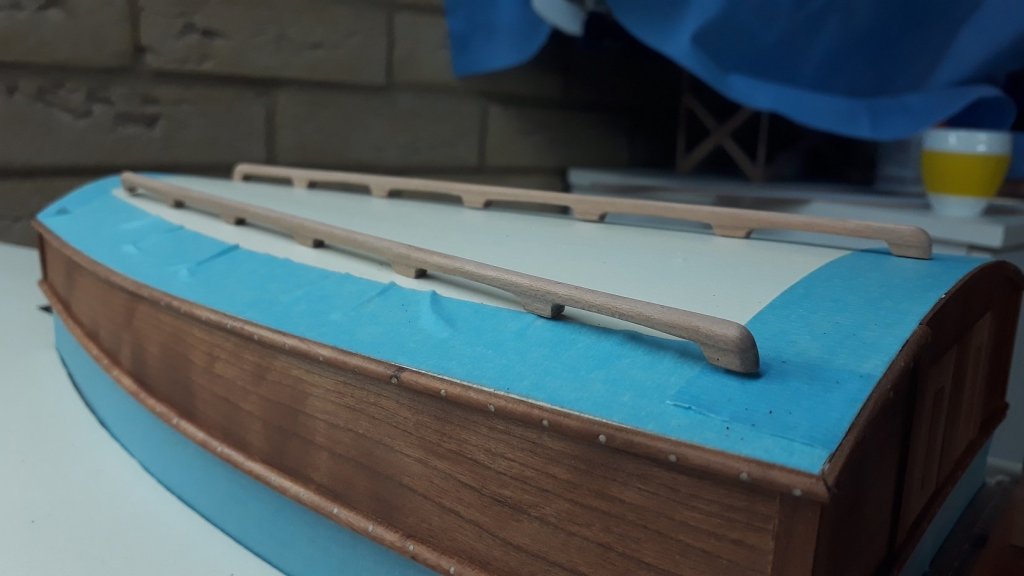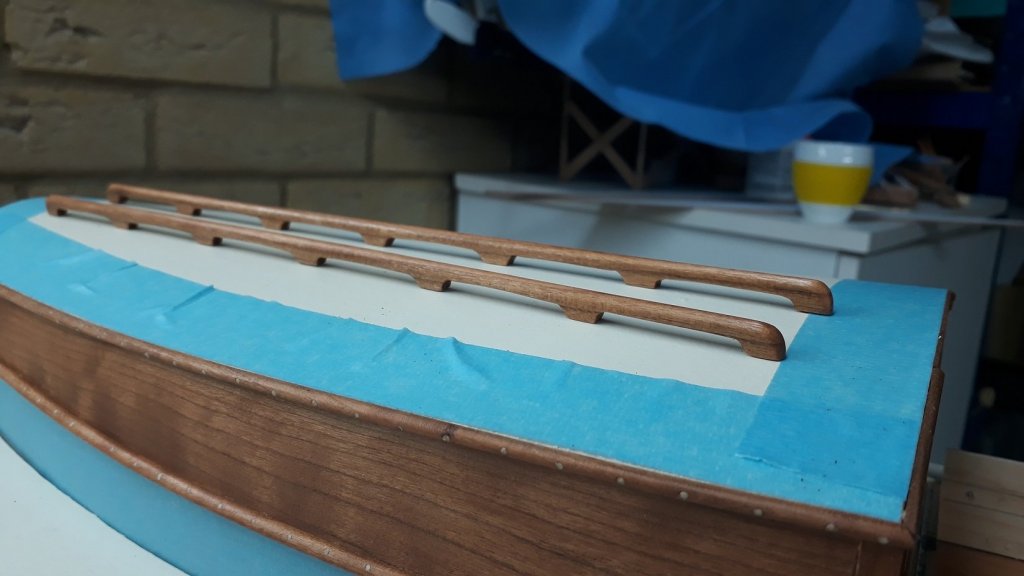-
Posts
1,600 -
Joined
-
Last visited
Content Type
Profiles
Forums
Gallery
Events
Everything posted by vaddoc
-
I had another go, the wood needs sanding etc. The old steps were an insult to this great forum. This looks better.
-
A little more work done so time for a quick update Druxey, even very low tack tape seems to lift the varnish so it seem the real issue is the bond of the varnish to the paint. Roger, indeed this was the plan all along and I think it worked fine. John, many thanks for the support and for finding the time to drop by, hope you are recovering and feeling better! The tabernacle is ready, I cleaned the scale and the copper deposits and is ready to be primed, painted and installed. However, I feel that it is a bit out of scale, on the cabin roof it looks massive. I might need to re make it. I installed the rubrails, they are under a bit of tension following the sheer so I used screws (to be replaced by wood nails) every 1 cm. About 150 in total. As I had carved hollow the back of the rubrails, they sat nicely over the edge of the canvas. The cockpit is almost ready, I am not sure of the steps as they don't look very "nautical" but there is quite a climb to the cabin and this looked like a good solution. I am not very convinced though. I also installed the tracks for the companionway hatch. With all hatches temporarily in place, the boat is looking almost elegant! I filled the counter holes on the hand rails with 1.8 mm tree nails, sanded and re applied Tung oil. I think the boat will need some metal hand rails, I thought I could do without but again I think they would look good and actually would be necessary in a bot like this. Another challenge....
-
Welcome Dave! You are certainly in the right place. The British winter is starting here. It usually lasts 3 years. Too bad I do mind winters...
-
.thumb.jpg.6fd4c1b78768bb3efd745ab810936005.jpg)
Steel files vs. diamond files
vaddoc replied to Moab's topic in Modeling tools and Workshop Equipment
Do diamond files have any advantage or clog less with brass? -
.thumb.jpg.6fd4c1b78768bb3efd745ab810936005.jpg)
New to Modeling, still prepping for my second build
vaddoc replied to CosmicRust77's topic in New member Introductions
Welcome Kevin. I cannot access your photos either. You will know what tools you need as you progress through the various phases and tasks of building your model. Regards Vaddoc -
Your work is inspiring Mark, you keep things simple and produce very elegant results. The boat is coming out mighty nice! The cockpit sole looks great. Following your build I ve been encouraged to try on some metalwork myself. (Not as easy as you make it look) Vaddoc
-
Many thanks to all for your comments! I did not mention that all my tests using the Fearsome Step Drill ended up with the destruction of the test piece. But I thought I had enough training and took a leap of faith. Well, end's well, all well! I made some more progress and interesting things happened. I had taped off the edges of the cabin roof and the tape has been there for some time. I did not consider that masking tape gets stronger the more it is left. When I removed it, it lifted the polyurethane varnish! These areas had a rugged edge and also a much paler colour as the Valejo polyurethane varnish seems to have a tint. However, this was sorted very easily, to the credit of Valejo which really is a top company. I sanded the raised edges of the varnish layer with 600 grit and simply applied two more coats of varnish. The cabin top now looks like this incident never took place! I continued work on the cockpit, I glued the external panels and then shaped and fitted the top covers. These are screwed and I will replace the screws with tree nails. I also did some work with the rigging. I am thinking of using two large solid pieces of timber (not sure how they are called) to offset the chainplates. They actually came out fine and I will install them after the mast goes on. I also finished the hand rails. My main problem was how to secure them on the cabin top, and I wanted to also have a slight curve which would apply some pressure as they are two rather stiff pieces of timber. I do not have tree nails long or strong enough. I thought of using brass wire and CA glue but I am concerned it would come off with the extreme variations in temperature. Finishing would also be a problem. I thought of using 1 mm screws and countersinking the head but the screws I have are mild steel and easily deform. This would happen for sure and with the countersinking it would be impossible to remove the bad screws. The solution was to get stainless steel screws which are much stronger. They seem indeed to be stainless steel as they are non-magnetic whereas the normal ones are. So here it goes: Holes drilled and then countersinking Then screwed on the cabin top with the help of the Admiral. Looks good I think! I still need to plug the holes and apply two coats of enamel varnish but I am happy.
-
.thumb.jpg.6fd4c1b78768bb3efd745ab810936005.jpg)
Newbie with a few tool questions....
vaddoc replied to CPDDET's topic in Modeling tools and Workshop Equipment
Spot on Bob Boat building needs a lot of space, a surface that ts ok if it gets ruined (it will) and a lot of light. -
.thumb.jpg.6fd4c1b78768bb3efd745ab810936005.jpg)
Newbie with a few tool questions....
vaddoc replied to CPDDET's topic in Modeling tools and Workshop Equipment
PVA glue will be the main glue you ll use. Aliphatic has quick set and dries yellow, normal PVA has more opening time and dries more clear. Epoxy can be useful for laminating and gap filling or for gluing dissimilar material, is messy and temperamental and has somewhat of a learning curve. I use it a lot though, usually thickened with talk powder as it is brittle on its own. CA glue for specific tasks. My personal opinion, all PVA glues are created more or less equal, epoxy and CA most definitely are not. For scratch building, glue sticks (pratt etc) are useful for gluing paper patterns to wood. There are various other glues but are rarely used. -
.thumb.jpg.6fd4c1b78768bb3efd745ab810936005.jpg)
Newbie with a few tool questions....
vaddoc replied to CPDDET's topic in Modeling tools and Workshop Equipment
The "good to have" tools are more than the stars in the sky. But the absolutely necessary ones are few. I would agree on the ability to drill holes, I love my (vast) collection of drills! In regards to planes and chisels, you ll need diamond stones, straps etc to keep sharp and they are really in the "good to have" list. All in good time... -
A quick addition, I drilled all the holes, initially with the fearsome step drill and then finished to size with the Dremel. I dry fitted the portholes and they look good!
-
It's been approx 400 tablets since the day of the tooth extraction and I am happy to report it has now settled! I found a bit of time to work on the boat and made some progress. First, I continued work on the cockpit. It was quite annoying to discover that a piece I had previously prepared with significant labour had gone missing. Also, a couple of other pieces did not fit anymore. All these had to be redone. I screwed the side plywood panels, then replaced the screws with tree nails, sanded the surface and then glued the cherry veneers on top. Thankfully I did not made a mess. Lots of springs and clamps were used. Then the back panels went on the same way. The fit of the bottom vertical panels is bad but I did not notice it when I put it together and of course now it cannot be repaired. I ll need to display the boat on the starboard side... The benches look scratched but they are not, in any case Il sand them again and re apply Tung oil and then oil based varnish. The portholes I bought arrived, they are very nice and I do not think I could have made anything close myself. I also bought a step drill as I will need to open 12.5 mm holes in the side panels of the cabin. Drilling such holes in the cabin that has taken me 12 months to make is a bit frightening! The first one came out fine but this drill needs to be used with extreme care as it is very aggressive. Pilot holes are needed. I dry fitted the first porthole and really liked the result. I think that the oiled wood and the shiny brass is a beautiful combination! When all 5 pertholes (per side) come on, it should look ok. I may need to add something on the inside of the glass to make it non-transparent, we will see though.
-
Not really Patrick. For some reason CA never worked for me so bonding dissimilar material is a headache. I sometimes use epoxy as good surface mating is not essential but it is messy and does not work very well. I have a feeling I ve been using the wrong CA glue, too fluid and too cheap! I think next I ll try a combination of gell CA with an activator to set it in seconds. I need to remember not to scratch my eyelids when gluing...😀
-
It is certainly coming along Patrick, no easy task capturing the very many curves and recesses! You are gluing plastic, paper, styrene and wood together and some times the contact area is tiny, is it CA glue you are using? Vaddoc
-
Welcome Pherigo! For sure start a build log and share your journey. Vaddoc
-
Thanks Patrick, good to hear from you again! Between work, family and a wisdom tooth extraction that went pear shaped, I managed to do very little work. Still, I made the cabin top hand rails. Turned out to be one of the most enjoyable tasks! I wanted to use pear but somehow, I only realised the wood I was using was cherry after the rails were finished. A splash of Tung oil and they are ready to be installed and then varnished.
-
Welcome Bruce! I d say start building, far too much fun to miss out.
-
Regarding saw discs. Both the tungsten tip one and the steel wood disc are very good. Could not really tell a huge difference for the dimensions I cut. The metal cutting HSS I found completely useless. I could not cut 1 mm brass, it was even dangerous. Maybe it's me though. Another thing, I ve read that the bearings on the saw are not shielded and gather dust easily. I ve attached the admiral's decommissioned vacuum cleaner and it sucks all the dust away, the dust extraction port is excellent. Highly recommended set up. As Brian and Bill say, it can send pieces flying so wear glasses and count your fingers. I am ashamed to say though I took the guard immediately off...
-
Have fun with your new saw Nick! I found my KS very useful for cutting strips and long straight sides in panels. For accurate sizing of parts though I use the disc sander or multiple passes with a sharp knife. I think you ll find this little saw useful and personally I did not find it underpowered, considering it is intended fro small jobs. I sanded flat the end of the screw that tightens the fence, it comes out from factory slightly oblique and ruins the alignment of the fence. Took less than a second, used the disc sander, look into this.
-
Spot on Carl! Lawrence, I run the drill press at the highest speed. I have a pair of excellent (and expensive) Knipex side cutters. The raised surface easilt sands away, especially if the nails are made of softwood and the boat timber from something harder. You can very easily make 0.6 mm wide, probably smaller if you wish. I make a few hundreds each time I sit down to it. I now use them all the time as structural nails Regards
About us
Modelshipworld - Advancing Ship Modeling through Research
SSL Secured
Your security is important for us so this Website is SSL-Secured
NRG Mailing Address
Nautical Research Guild
237 South Lincoln Street
Westmont IL, 60559-1917
Model Ship World ® and the MSW logo are Registered Trademarks, and belong to the Nautical Research Guild (United States Patent and Trademark Office: No. 6,929,264 & No. 6,929,274, registered Dec. 20, 2022)
Helpful Links
About the NRG
If you enjoy building ship models that are historically accurate as well as beautiful, then The Nautical Research Guild (NRG) is just right for you.
The Guild is a non-profit educational organization whose mission is to “Advance Ship Modeling Through Research”. We provide support to our members in their efforts to raise the quality of their model ships.
The Nautical Research Guild has published our world-renowned quarterly magazine, The Nautical Research Journal, since 1955. The pages of the Journal are full of articles by accomplished ship modelers who show you how they create those exquisite details on their models, and by maritime historians who show you the correct details to build. The Journal is available in both print and digital editions. Go to the NRG web site (www.thenrg.org) to download a complimentary digital copy of the Journal. The NRG also publishes plan sets, books and compilations of back issues of the Journal and the former Ships in Scale and Model Ship Builder magazines.


